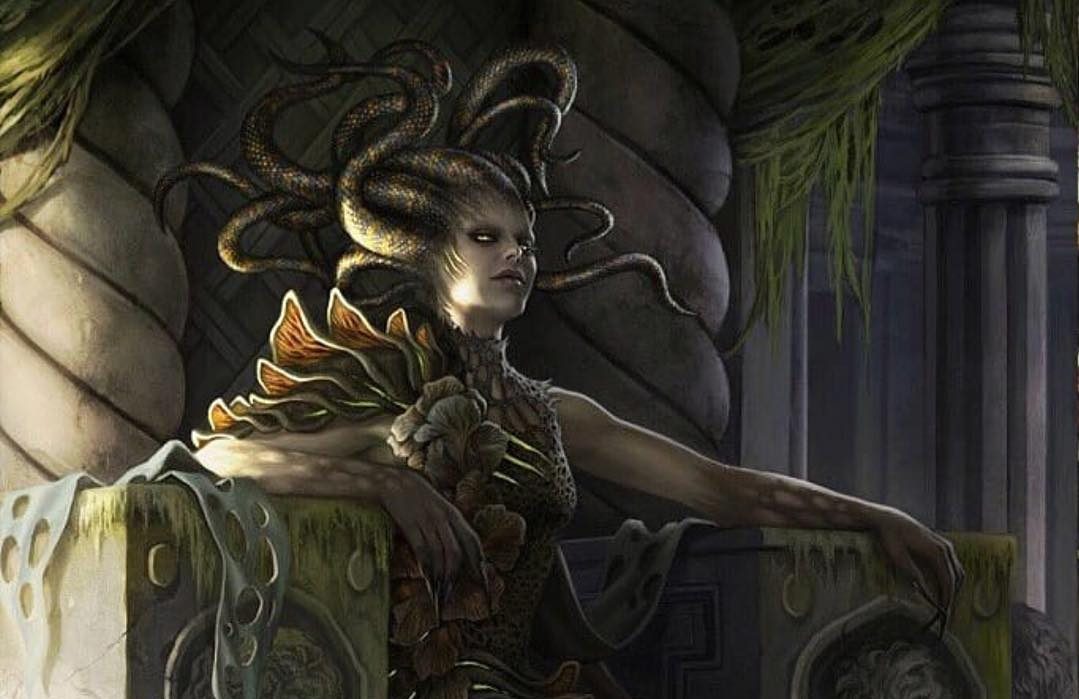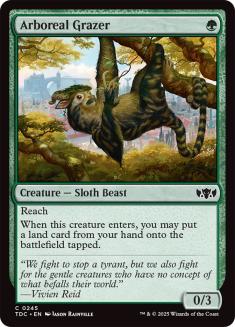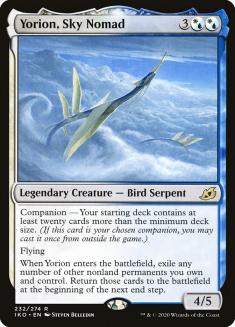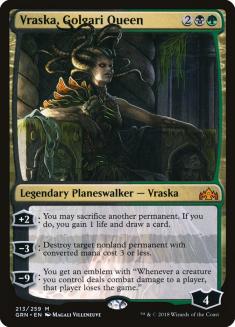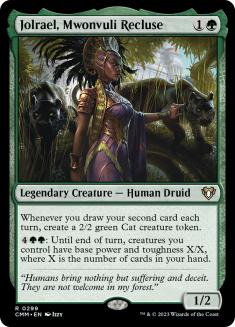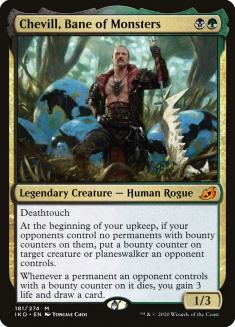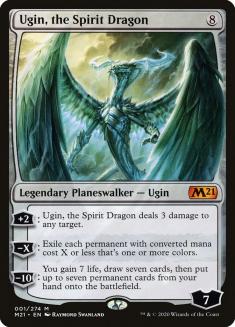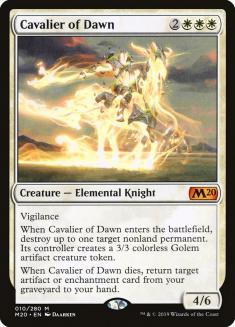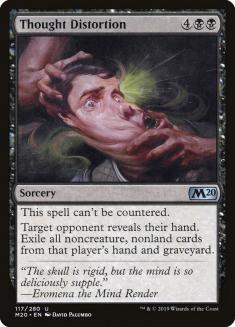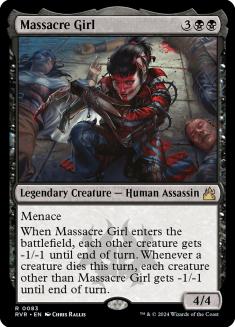I’ve been frustrated with Core Set 2021 Standard. It’s hard to put a finger on why I’ve struggled to enjoy it, since objectively, I play against a wide range of decks that occupy a good variety of strategies. On paper, it looks like a very healthy metagame, but it still feels stale to me. I think the issue is that the best cards have been around for a long time and they have an outsized impact that I’m tired of. New cards see play, but they don’t fundamentally change much about what really matters in the format, with the debatable exception of Scavenging Ooze, which doesn’t exactly feel new to me, even if it’s new to Standard.
Personally, I don’t know if just printing cards that aren’t as annoyingly powerful as Nissa, Who Shakes the World; Hydroid Krasis; and Teferi, Time Raveler would fix this, or if I just want more frequent rotation in Standard, but it’s telling (at least about me) that I dislike this Standard despite acknowledging that it basically checks all the boxes it’s supposed to check.
Part of the issue is what I’ve addressed before — I think the power level of cards in this format leads to a polarized metagame in which decks have to either go extremely big or extremely fast, and interaction is generally difficult. Leaning into that theory, I spent some time playing Simic Ramp, since other colors added to that deck are mostly added for the sake of interaction, and it mostly seemed like ramping to Ugin was all the interaction necessary. That’s a competitive strategy, but not especially novel, and for the most part, it feels like which other cards you play in your ramp decks don’t matter as much as drawing your ramp spells and payoffs in the right order and combination, and I found the deck extremely boring to play (as I do with most ramp decks, so this isn’t particularly noteworthy).
Anyway, I felt compelled to branch out, and wondered about adding Arboreal Grazer to Yorion Orzhov Blink and playing only 60 cards with Yorion, Sky Nomad in the maindeck for better mana and to draw the important cards more often. Playing with the deck, I discovered that Yorion was the weak link, but I really liked a lot of what was going on in Abzan Doom Foretold, and the deck evolved to something interesting.
It’s hard to play interaction in this format because you’re attacked in such a wide variety of ways, but as it turns out, Abzan’s answers are versatile enough to work with that. Here’s where I am after a lot of tweaking:
Creatures (11)
- 1 Scavenging Ooze
- 4 Arboreal Grazer
- 1 Chevill, Bane of Monsters
- 4 Llanowar Visionary
- 1 Jolrael, Mwonvuli Recluse
Planeswalkers (5)
Lands (26)
Spells (18)

Starting with Doom Foretold and Treacherous Blessing, I found that I got stuck with Treacherous Blessing on the battlefield too often, either because I didn’t draw Doom Foretold or couldn’t line it up with my opponent controlling a nonland, nontoken permanent. I added Vraska, Golgari Queen to the deck as an extra way to get out of Treacherous Blessing and it transformed the deck. I started with just a single copy and quickly went up to four, before dialing it back to three after drawing all four copies early one game and deciding that drawing multiples was too much of a liability.
This is very much a Vraska deck, and Vraska is a forgotten gem in this format. Killing Teferi, Time Raveler; Narset, Parter of Veils; Witch’s Oven; and all sorts of creatures gives this deck the backbone of its versatility, but the +2 ability is where Vraska really shines, and I’ve never played another deck where it was as good as it is here. Not only does Vraska let you get rid of unwanted Treacherous Blessings, but the same Arboreal Grazers and Oath of Kayas that make Doom Foretold good also make Vraska great, and unlike Doom Foretold, you can also sacrifice tokens from Elspeth, Sun’s Nemesis (which plays wonderfully with Vraska) and Castle Ardenvale.
The pairing of Vraska, Golgari Queen and Elspeth Conquers Death is just very satisfying, as they shore up each other’s weaknesses while also having internal synergy, as Vraska can help ensure that you have something to bring back with Elspeth Conquers Death. Between those two; Doom Foretold; Casualties of War; and Ugin, the Spirit Dragon, no opposing permanent is safe, and every one of these versatile answers nets additional value. So that’s the top of the curve, all answers but answers that pull you further ahead, with no dedicated threats.
This deck is built to grind, but that can be a tall order in a format with Uro, Titan of Nature’s Wrath; Hydroid Krasis; and endless planeswalkers and other card advantage engines. The incremental value from these cards isn’t enough by itself, but the burst of cards from Treacherous Blessing (the most efficient card draw spell in the format) and late-game power of Castle Locthwain (in a deck with a good amount of incidental lifegain) give this deck its inevitability.
That left the question of how to survive to that point. Ideally, the deck wants to start with Arboreal Grazer and then cast Llanowar Visionary or Treacherous Blessing on Turn 2 and follow it up with a four-mana play. Where I struggled was figuring out what to do in the early turns without Arboreal Grazer.
With Yorion, I had Charming Prince, but that was too low-impact and contributed to weak hands that didn’t do enough. I tried replacing it with Eliminate to take a more controlling role, but those are somewhat matchup-dependent and overlap too much with Vraska, and don’t consistently solve the problem of getting cards out of my hand to let me get value out of an early Treacherous Blessing. Heartless Act replaced Eliminate to avoid having too much removal for small threats when combined with Oath of Kaya and Vraska, Golgari Queen, but I needed more proactive two-mana plays.
Scavenging Ooze is great, but it’s at its best later in the game. Jolrael, Mwonvuli Recluse and Chevill, Bane of Monsters are actually my most recent additions to the deck, but I’m optimistic about both of them. Jolrael is particularly exciting with Vraska, and thanks to Treacherous Blessing, the six-mana ability threatens to make my creatures pretty large in the late-game. I wouldn’t be at all surprised if Jolrael overperforms and I find ways to add more, making it a focus of the deck (note to self: consider cutting an Oath of Kaya for another Jolrael).
Chevill is a little more matchup-dependent, but it comes down as a fantastic blocker and stands to completely take over the game against creature decks, and makes things like an opposing Arboreal Grazer much less annoying for my Doom Foretolds. If this overperforms, it’s more likely to earn additional sideboard slots rather than additional maindeck slots, but I think it’ll be a good role-player here.
Cling to Dust and Elspeth Conquers Death were both fairly late additions because I felt like I should have ways to use my graveyard, since my deck naturally churns through a lot of cards. Elspeth, Sun’s Nemesis, as noted, has performed really well with Vraska, but has also helped my motley crew of creatures meaningfully threaten opposing planeswalkers. I’m less certain about Cling to Dust, and it could easily be replaced by another Scavenging Ooze, but I’m interested in trying it a bit more, particularly in conjunction with Jolrael, though it’s awkward that I won’t reliably be able to use it especially early.
I’ve played with between zero and two copies of Ugin, the Spirit Dragon, and I think I like exactly one. Sometimes an opponent starts running away with multiple planeswalkers and Ugin’s the only thing that can catch up, and it’s nice to have a powerful finisher, but the format generally feels ready for it and it’s not as reliably game-ending as I’d like an eight-mana spell to be.
Playing with the deck, I went down to 26 lands from a starting point of 28, and this feels about right. Figuring out the optimal number of Castles and Temples is also tricky. I prefer Temples to Fabled Passage because I think I have enough cards that cover basic land types thanks to the Indatha Triomes, and Fabled Passage doesn’t play well with Arboreal Grazer, while Temples play optimally. Still, I want to keep the number of Temples to a minimum, as I don’t want too many tapped lands with the Triomes. Both Castles are fantastic and I think this is the right number and combination, but one more could be appropriate. I’ve felt pretty good about the colored mana in the deck. If anything, it might be possible to play one more untapped land.
I’ve tried a lot of other cards in this deck. Yorion was too situational. Charming Prince was too low-impact. Mazemind Tome was too slow. Sleeper Dart was a little tempting to get more synergy with Doom Foretold, but ultimately I don’t think you need the extra value. Nissa, Who Shakes the World was too swingy — you don’t capitalize on it super-well and if they kill your land and Nissa you’re too far back.
Cavalier of Dawn is pretty awesome. It’s a great out to Treacherous Blessing that can let you Treacherous Blessing again when it dies, and it also offers more versatile removal and a quick battlefield presence. I’m less sure that’s not worth it, but it’s kind of competing with Casualties of War in my mind at this point because I’m looking to lower rather than increase the curve and I don’t really want to go to fewer than two copies of Elspeth Conquers Death, especially while adding a card that plays really well with it.
Liliana, Dreadhorde General is similar — very powerful, but very expensive. Tried it a little, it could be good, but currently I’m prioritizing Casualties of War because I think it’s important to prevent opponents from running away with the game with Nissa / Hydroid Krasis.
Murderous Rider and Mythos of Nethroi are both temping, but I like the number of three-mana spells in the deck currently. Either could potentially replace one Oath of Kaya, but Oath of Kaya’s a really great fit in the deck and important against aggressive decks.
As for the sideboard, Thought Distortion is amazing against blue control decks. I could see playing a third, but you really never want to draw two, so given that I’m not sure the third would actually improve my deck, it’s hard to justify devoting an additional sideboard slot to that. Playing only three Agonizing Remorse with no additional cheap discard feels odd, but I think Thought Distortion occupies the same role despite its very different cost. I don’t think replacing Agonizing Remorse with Duress is responsible in a format with Hydroid Krasis.
Disfigure feels like an important card to have against aggressive decks to avoid falling behind. I used to have more of them and Cry of the Carnarium, but I just don’t play against red-, black-, or white-based aggro enough to justify those cards at this point.
Blightbeetle is a weird one. It’s narrow, yet basically unbeatable for Conclave Mentor decks. I’m not sure if there are enough of those to justify it, but it’s also fine against green aggro in general.
Mythos of Nethroi feels like too strong a catch-all not to include, but I’m particularly happy about it against Temur Reclamation, where it can answer either Wilderness Reclamation or Nightpack Ambusher at instant speed, which is a priority in either case. I’d consider adding more except, weirdly, I haven’t run into Temur Reclamation.
I’m not sure about the split between Kaya’s Wrath and Massacre Girl. I’m more confident in Kaya’s Wrath, but I only recently added Massacre Girl to try it out and my one experience was very positive (beating a possible Dovin’s Veto out of an Azorius Flyers deck), so I want to keep trying it.
There’s a good chance the sideboard should have some kind of additional threat like Liliana, Dreadhorde General; Garruk, Cursed Huntsman; Baneslayer Angel; Elder Gargaroth; Cavalier of Dawn; or God-Eternal Bontu, but I haven’t identified when I’d want such a finisher, though that’s probably just a leak in my own game because of my enjoyment of grinding, as such sideboard cards are often successful.
I don’t think I’ve broken the format, but at least for me, this deck has done a lot to break the monotony. It’s a refreshingly different deck with a lot of options to explore in a color combination that’s been largely overlooked recently, so I’d recommend this if you’re looking to do something different in Core Set 2021 Standard.

